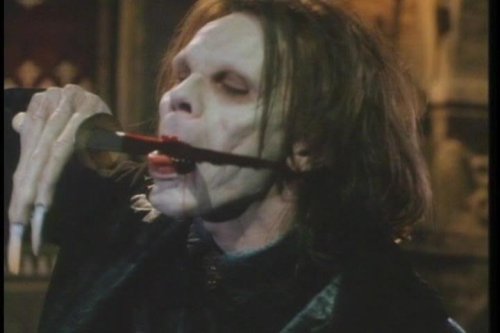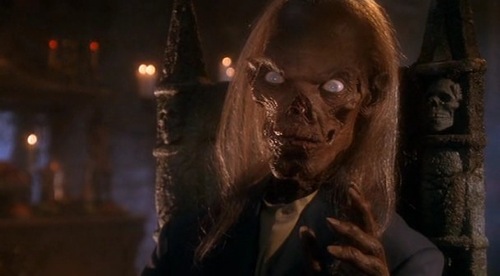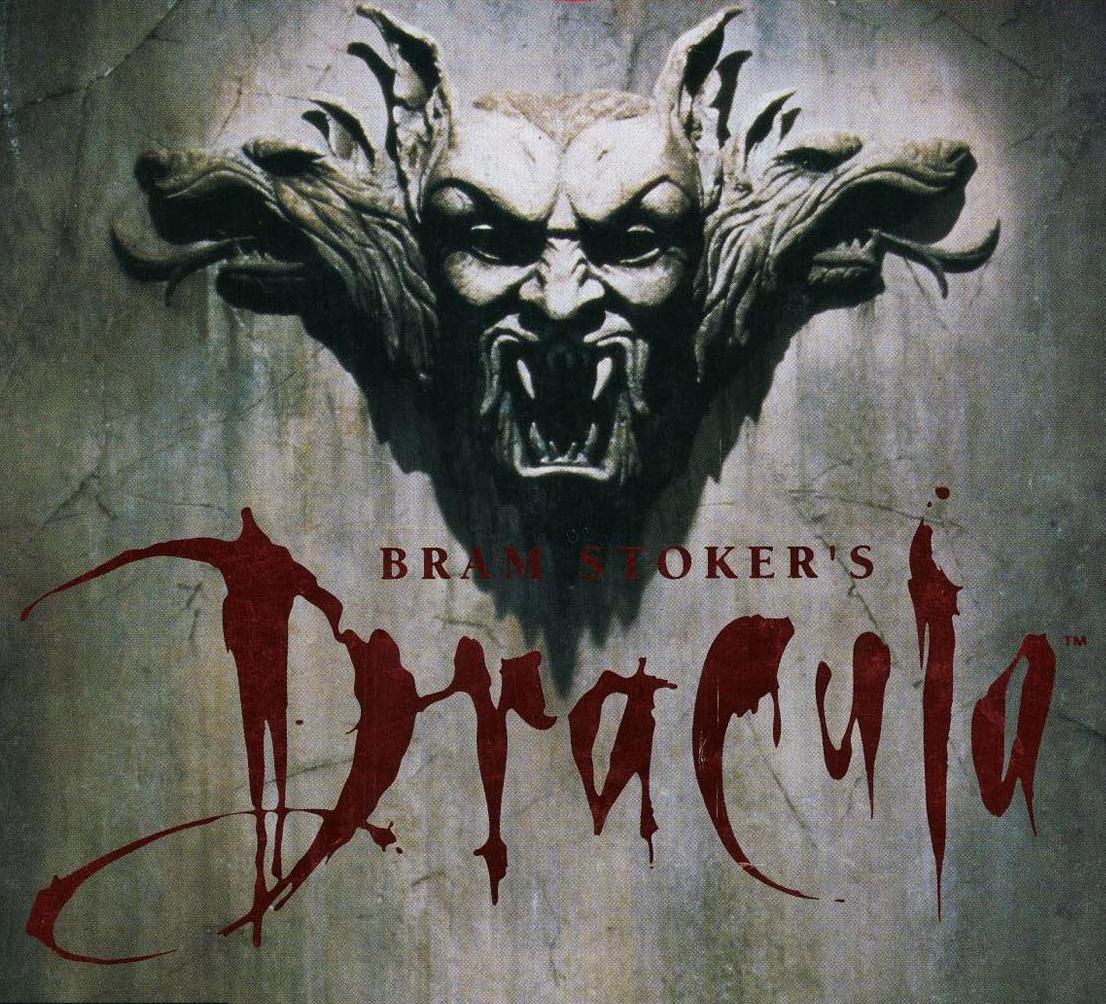Bloody Good Fun: Vampires on Film IV, The 1990's
As the 1990’s began, it seemed that the latest influx of vampire films had taken a good deal of inspiration from 1987’s The Lost Boys. The time-honored trope of the older, suave, and genteel male vampire was beginning to disappear in favor of a more timely vampire: the young and the tan-less. Vampires began appearing more in their early to mid twenties; this infusion of youth seemed to breathe new life into the genre and a bevy of films – some good, some bad, some altogether strange – began springing up. The vampire was once again in vogue, and even our old friend Dracula would soon be making a well anticipated appearance.
There are far too many vampire films during this ten year stretch to list each and every one in turn. The following is more or less a short list of titles notable for one reason or another, that we feel best represents the direction the genre took during the decade; your additions to this list are more than welcome, so feel free to leave us a comment with your thoughts.
Sundown: The Vampire in Retreat (1990)

We’ll start this list with an odd little film from the director of perennial horror favorite Waxwork, Anthony Hickox. With a cast list of David Carradine, Bruce Campbell, and Maxwell Caulfield (or, as I prefer to call him, Sexy Rexy), and an original plot revolving around a colony of vampires living in a small western town, it seemed the perfect recipe for a surefire horror hit. Sadly, it comes off as just a bit too weird to appeal to the masses. The story itself has an interesting bend: vampires living hidden in plain sight in small town America, searching for a synthetic solution for their need to feed, and fighting off revolution from within. The film makes a good contribution to vampire film canon, as the idea of synthetic blood substitutes become very important to the genre as time progresses. And yet, the film itself is an overwhelming dud, just seeming to fall flat in spite of a great cast. Still, it is worth a watch just to see the almighty Bruce at play. Keep an eye out for Twin Peaks alum Dana Ashbrook as well.
Subspecies (1991)

In an era where, once again, the debonair vampire was king, Subspecies arrived as something of a surprise. Harkening back to old world days, the film primarily takes place in the old world itself – Romania, to be exact. A centuries-old struggle for power between two vampire brothers is brought into the modern world by visiting college students who stumble upon the conflict and become hopelessly entangled. A far cry from the genteel vampire figure that had become more prominent in modern cinema, Subspecies’ blood-craving creatures, particularly Radu, are bloodthirsty and hideous – as, some might say, they should be. The film, though having received lukewarm critical reception, was well-received by vampire fans and became something of a cult hit, going on to spawn three sequels and a spin-off film, as well as a brief run of graphic novels.
Bram Stoker’s Dracula (1992)

You simply cannot have a list of vampire films of the 1990’s without including Francis Ford Coppola’s epic take on the title novel, Bram Stoker’s Dracula, from 1992. While I won’t go too far into depth here – the film really requires a deeper look for a proper review, which I intend to do in the near future – I will say that, while I remain disappointed in the film overall, there really was no better choice to play Dracula than Gary Oldman. Beyond the title character, there was a great deal of miscasting plaguing the film; in spite of this, the beauty of the grandiose sets and costuming provided enough of a sensory experience that audiences were able to overlook these issues, making this version of Dracula one of the most popular among vampire fans today.
Buffy the Vampire Slayer (1992)

Everyone knows Buffy. Either you want to high school with her, or you have spotted her in dozens of horror films. Pretty, blonde, vain, and total machete-fodder for whatever masked master of the hack-and-slash happens to be hot on her high heels. This time, however, things are a little bit different. Before the Cult of Whedon grew out of the television series of the same name, Joss was just another Hollywood screenwriter pitching his idea, and in this case? It was a GREAT idea.
Time and again we have see the Buffys of horror films make stupid mistakes and die a grisly death for their trouble; in Whedon’s version of the story, Buffy not only survives her brush with death, but kicks a little ass along the way. Privileged teen Buffy, cheerleader and it-girl of the popular crowd at school, finds her world turned upside down upon discovering that not only are vampires real, but she was born to fight them. When a master vampire and his minions descend on Los Angeles, it is up to Buffy – along with her guide, Merrick, and ragtag sidekick, Pike – to put a stop to it. The film stars Kristy Swanson in the lead role, alongside a supporting cast of Donald Sutherland, Luke Perry, Paul Reubens (yes, Peewee), and horror veteran Rutger Hauer. The film is funny and refreshingly clever; there still has yet to be an equal to it in the vampire genre. Quick tip: keep an eye out for eventual Oscar winner Hilary Swank in an early role.
Embrace of the Vampire (1994)

Anyone who was conscious in the 1980’s remembers Alyssa Milano. Television viewers around the US watched her grow up on sitcom Who’s the Boss. Sadly, like many female child stars before her, Milano attempted to prove to the world that she was grown-up and capable of taking on more complex roles by taking off her clothes.
1994’s Embrace of the Vampire is a heavily sexualized account of a vampire chasing after a virginal college freshman, featuring Milano in various states of undress while acting out the erotic dreams sent via the titular vampire. Plot is sparse at best, and let’s be honest, no one is watching it for the compelling story line. An odd note of interest: the vampire is played, bizarrely enough, by Martin Kemp, formerly of 80’s synth band Spandau Ballet. If you’re really desperate to see little Samantha Micelli in the buff, this is the film for you; if you’re looking for anything else out of a film, best to look for it elsewhere.
Interview with the Vampire (1994)
If there was a single word to describe Interview with the Vampire, it would be decadent. Everything about this film, based on the novel of the same title by author of note Anne Rice, is rich, luxurious and extravagant. The costumes, the sets, even the score – one of the best in any vampire, let alone horror, film – is beautiful and somehow morosely grandiose. A true period piece that still manages to span several centuries, the film tells the tale of reluctant vampire Louis, who gives his life story to a reporter on more or less a whim; he confesses quite freely his initial intention of making a meal of the reporter, played by Christian Slater, in a role he took on following the untimely death of its original intended star, River Phoenix.
Though the film deviates a good deal from the novel it is based upon, it does so in such a way as to make the story more palatable for the screen; if you had not read the novel, you would never know anything is missing. Tom Cruise takes on the unsympathetic role of Lestat, Louis’ sire and the chief villain of the piece, with a very young Kirsten Dunst playing child-vampire Claudia to perfection. This film showcases one of the best examples of the idea of the child-vampire who, in a throwback to Near Dark’s Homer and Lost Boys’ Laddie, is forced to age and mature in her mind while her body remains that of an adolescent. I have no hesitation in saying that this is one of my favorite films; it drew me back to the theater time and again, and remains quite enjoyable to this day.
Just as Christian Slater was never intended to be cast in the film, neither was Kirsten Dunst: a bit of well known casting trivia is that the role of Claudia was first offered to Christina Ricci who, just off The Addam’s Family, was convinced by her agent to decline in fear of being typecast. These casting changes still managed to produce a phenomenal film, leaving many to wonder whether or not its original intended stars would have helped or harmed the film.
Dracula: Dead and Loving It (1995)

In 1974, Mel Brooks brought us Young Frankenstein, a hysterically clever send-up of earlier creature features, centered on a descendant of Dr. Frankenstein and his namesake monster. 21 years later, he attempted the same play on genre with Dracula: Dead and Loving It, and, sadly, came up only with a vaguely passable attempt at horror-comedy.
Leslie Neilsen takes on the role of the Transylvanian Count, with help from veteran comedian Harvey Korman as Dr. Seward and Brooks himself taking on the role of Van Helsing. Following the same basic story line as many earlier adaptations of the film, Mina is played as the daughter of Dr. Seward and the target of the vampiric count. Unfortunately, the film falls just short of funny and lends only the occasional laugh. Watch it if you must, but don’t expect much. Keep an eye out for a chuckle-worthy bloodbath and, in the only really funny performance of the film, Peter MacNicol playing insect-gobbling Renfield.
Bordello of Blood (1996)

In 1995, Universal released Tales from the Crypt: Demon Knight, a horror film done in the style of the hit HBO series, complete with appearances by the Crypt Keeper, and meant to be the first in a trilogy of films. Experiencing moderate success with the film, Universal went on to make a follow-up: not a sequel by any means, but simply another story set in the same universe, with a ‘cameo’ of sorts by an artifact that featured heavily in the first film. This film that came to be was Bordello of Blood, starring Dennis Miller and Angie Everhart, with appearances by horror film vets Corey Feldman and Chris Sarandon, and featuring a cameo by Demon Knight alum William Sadler.
The story is convoluted at best; Lillith, the first vampire, is running a brothel full of vampires, fronted by a funeral home. There is some holy water Super Soaker action that is fairly amusing, and a less-than-surprising surprise ending, but not much else to note. The film seems overall not totally coherent, and even somewhat rushed. Moviegoers took note, and Bordello of Blood did not fair well financially; another problem the film faced was the release of From Dusk Till Dawn earlier in the year, a Robert Rodriguez directed / Quentin Tarantino penned film that carried much of the same feel – a vampiric strip club rather than whorehouse – with much more wit and better action. Still, as a standalone, Bordello of Blood is worth a watch, so long as you’re not expected anything spectacular.
Blade (1998)

Once upon a time, Wesley Snipes was a badass. And it was on this reputation of badassery that he took up the mantle of a Blade, a Marvel Comics spawned vampire/human hybrid who takes it as his life’s purpose to hunt down and kill the vampires plaguing the world. Though the film deviates a good deal from the comic book character’s history, it follows the same basic format: the title character is a ‘daywalker’, a half-vampire, half-human hybrid who can walk in the daylight but still must subsist on blood (or in this case, a blood-substitute serum). When vampire villain Deacon Frost (Stephen Dorff) attempts to resurrect an ancient vampire god, Blade moves to protect a convenient damsel in distress, and the rest of the world to boot.
Fun, action-packed and featuring an extremely memorable soundtrack (who can forget the blood rave?), Blade takes the idea of the reluctant vampire to an entirely new level. The film spawned two sequels, though their watchability is debatable. A recent chatter on the net reports that Wesley Snipes may be eager to take up the character once again… once his prison sentence has been served.
John Carpenter’s Vampires (1998)

Vampires have long found associations with Christian religion, and the Catholic church much more than others. This seems almost natural, considering the basic Catholic symbolism of imbibing blood at the Eucharist. So it comes as no surprise that when John Carpenter’s Vampires went into production, it would rely heavily on religious lore and symbolism. James Woods stars as Jack Crow, a Vatican-raised orphan who hunts vampires for the Church in retribution for the wrongs suffered at the hands of such creatures in his own past. With sidekicks in the form of his usual wingman (Daniel Baldwin in what might be the most coherent performance he’s ever given) and a particularly quirky priest (Tim Guinee), Crow hunts down a powerful vampire who seeks a religious relic that would give him unparalleled power. Quick, witty dialogue and heart-pounding action make this film a definite must-see. Carpenter’s vampires are not the foppish, brooding sort seen just a few scant years earlier, but monsters whose thirst for blood is met only by their thirst for power. Why this film received such poor box office showings will forever remain a mystery.
The 1990’s ended on a high note and, with them, a century of vampire film-making came to a close. With the dawning of a new century, vampire fans were eager to see what would be coming next. Find out in my next article, Vampire Films of the 21st Century.
Be sure to check out the earlier articles in this series:
Vampire Films 1900-1950’s.
Vampire Films of the 1960’s-1970’s.
Vampire Films of the 1980’s.

